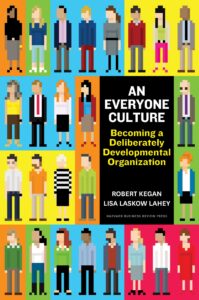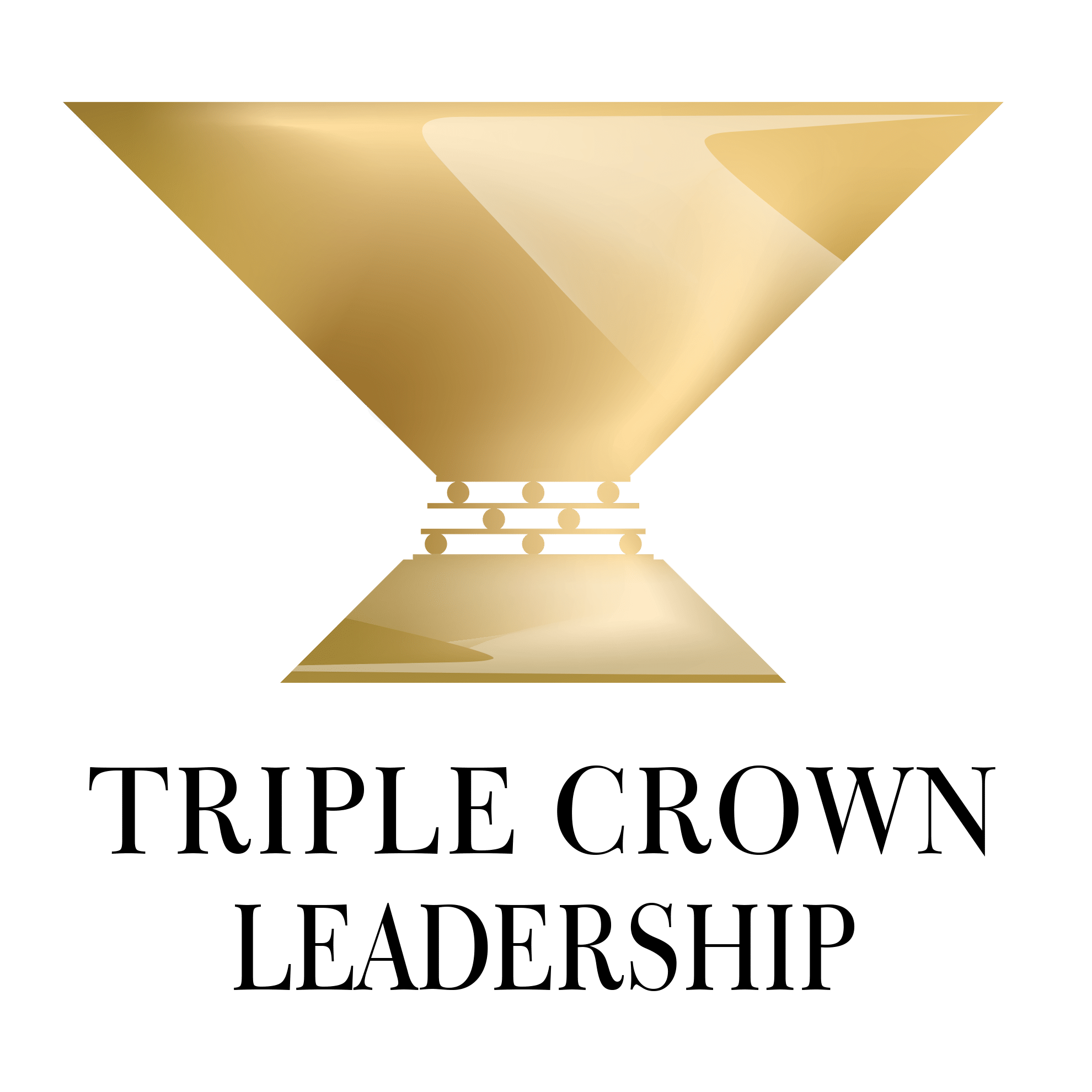Triple crown leaders—ones who build excellent, ethical, and enduring organizations or teams—focus not just on recruiting great people but also developing them intentionally. They focus on developing people systematically and continually.
Unfortunately, many leaders fail miserably when it comes to developing people. Most organizations leave development mostly up to individuals, acting on their own initiative, in their “spare time.” What a waste. Such a passive approach is likely to yield little.
According to “The State of Talent Management,” a study of 700 senior leaders, most organizations hold their executives and managers accountable for achieving business results, but only 10 percent hold executives accountable for developing their direct reports, and a paltry 5 percent indicate that their managers consistently demonstrate the ability to develop employees.
“If businesses managed their money as carelessly as they manage their people, most would be bankrupt.
The great majority of companies that control their finances don’t have any comparable processes
for developing leaders or even pinpointing which ones to develop.”
-Ram Charan and Bill Conaty, The Talent Masters
The Benefits of Developing People
Organizations that develop people well gain many benefits, including:
- increased performance
- greater productivity
- higher talent retention
- increased customer satisfaction
- healthier organizational culture
The benefits show up not only in organizational results, but also in individual lives. The development work increases not only individual potential but also group potential. The benefits compound. When done very well, it can transform an ordinary organization into a talent rocket ship.
How to do it well?

Leadership Derailers Assessment
Take this assessment to identify what’s inhibiting your leadership effectiveness. It will help you develop self-awareness and identify ways to improve your leadership.
Developing People: Effective Practices
“What is needed is people who are interested not in being leaders as much as in developing leadership in others.”
-Ella J. Baker, civil rights and human rights activist
Whose responsibility is people development? Developing people is not solely the job of human resources. Nor is developing people just sending them off for a few days of training. Development is a critical responsibility of all leaders and must be ongoing. Actually, developing people should be part of everybody’s work.
Excellent people development unleashes potential, initiative, innovation, and leadership. It generates inspired and committed followers. Here are some effective development practices:
Leadership and stretch assignments. Leadership is experiential. The best way to develop leadership is to give people actual leadership assignments—challenging projects (sometimes called “developmental pulls”) that stretch them somewhat, accompanied by coaching and direct and timely feedback. People often learn best from their mistakes, so letting leaders make mistakes, as long as those mistakes are not too costly, can be a great way to advance their development. Aspiring leaders should seek leadership opportunities proactively—whether at work or in the community—and volunteer often for stretch assignments.
Personal feedback. The days of the annual or even quarterly performance reviews are done. Supervisors should provide regular and constructive feedback, mostly in one-on-one sessions. The process should include inviting people to open up and talk about what they’re struggling with and why, with mutual discussion of how they might overcome obstacles. See our article, “How to Give Effective Feedback—A Communication Superpower.”
Often, surprising and helpful insights come from 360-degree reviews, in which people receive feedback from all directions, including supervisors, peers, and people they manage.
Mentors can be a tremendous asset for aspiring leaders and high-potentials, providing guidance about long-term issues, career paths, and much more. Leading organizations often match younger and more experienced employees so that two-way feedback between them can enhance the performance of both. If your organization does not actively facilitate mentorship, then take the initiative and ask a leader you admire to observe you and meet periodically.
Professional coaches can help workers gain greater self-awareness, set and achieve goals, contribute more effectively to the team, work more productively with others, communicate more effectively, and increase career and life satisfaction. Some leading organizations hire coaches for groups of their employees and make them available at no charge to the group and the group members individually, with assurances of confidentiality for what group members might be struggling with.
Small groups. Leaders can benefit from the dialogue of small peer groups meeting regularly, building trust, sharing personal and professional hardships, best practices, and delving into challenging issues in a safe and confidential environment. (A creative version of this is a “situational workshop,” in which a small group of workers—including workers facing challenges and more experienced colleagues acting as mentors—meets regularly (e.g., weekly) to go over a work challenge and how it was handled and then to brainstorm new ideas for how it could have been handled. Often, experienced mentors see new options for responding that the workers didn’t even consider in the heat of the moment.)
“Psychological safety”: a shared sense that the team is safe for interpersonal risk-taking, such as floating a new idea for improving performance, raising a concern, or admitting a mistake. To create psychological safety we must build trust. Stephen M. R. Covey has noted that with high trust in organizations, speed increases and costs decrease.
Job rotation programs help people learn different sides of the organization, develop new relationships, and stretch their skills. Leading organizations regularly rotate people to jobs temporarily, even outside their functional specialties, to broaden their experience. Try regularly putting a finance person into a marketing or IT role for a few months while one of those folks spends some time in finance. Then repeat over and over.
Personal and career development. Smart organizations today go beyond professional development and assist with the personal and career development of their people, recognizing the importance of aligning professional work with people’s personal values and aspirations. Each worker should have a personal development plan that they update regularly and talk through with their manager (and mentor or coach). At IKEA, they have a worker self-assessment tool to identify strengths and weaknesses, figure out a promising career path, and establish an action plan with training and development. Also, workers can identify a desired future position and ask for coaching and advice by the person who has this job.
Separating performance reviews from compensation reviews. Performance feedback should be continuous throughout the year while compensation reviews should be annual.
Giving people time to pursue own projects of interest (e.g., “20 percent time” made famous by Google but also practiced by many other organizations).
Courses, workshops, retreats, book clubs, and lunch-and-learn discussions. Consider topics or books to discuss such as trust, heart qualities, followership, emotional intelligence, courage, diversity, and more.
Development dashboards, in which executives systematically keep track of data about learning and development (including upskilling)—and related metrics like engagement, promotions, retention, etc.
“Job crafting”: a work design process including self-initiated, proactive strategies to change the characteristics of a job to align the job with personal needs, goals, and skills.
Designing work for “flow”: a “state of complete absorption in an activity or situation” via a clear set of goals, clear and immediate feedback on performance, and a good balance between perceived challenges and skills.
Head and Heart in Development
In our experience, most development programs focus on what we call “head” elements (like task knowledge, skills, and technical competence)—which are clearly important—but mostly neglect “heart” elements (like integrity, emotional intelligence, courage, and resilience).
Though it’s not widely known, effective training programs can help people develop their emotional intelligence, ethics, resilience, courage, and sensitivity and commitment to diversity, equity, and inclusion.
This isn’t just squishy nice stuff. It makes a real business difference. For example, a common derailer for many workers, including leaders, is an inability to manage their emotions, especially when they’re under pressure. The problem: this leads to poor decisions, with negative business consequences. So if workers can be taught to recognize when they’re entering an emotional minefield and given tools about how to address it well, organizations can avoid nasty explosions.
The same is true for unethical decisions, which are also usually made under pressure. Organizations that can build individual character and organizational processes for vetting not only financial dimensions but also ethical aspects, can avoid such poor decisions and their reputational fallout.
Good development efforts also encourage personal renewal mechanisms such as exercise, reflection, sabbaticals, and even meditation or prayer. Finding “sanctuary” (e.g., through a walk, hike, or run) allows people to reconnect with their hearts, which leads to better decision-making.

Crafting Your Life and Work Course
Regain clarity, direction, and motivation for your next chapter, starting with a powerful foundation of self-awareness and commitment to your values and aspirations.
Deliberately Developmental Organizations

In their book, An Everyone Culture, Robert Kegan and Lisa Laskow Lahey identify organizations that take people development practices up a notch, becoming what they call a “deliberately developmental organization”:
“Their big bet on a deliberately developmental culture is rooted in the unshakable belief that business can be an ideal context for people’s growth, evolution, and flourishing—and that such personal development
may be the secret weapon for business success in the future.”
At Next Jump, one such company they highlight, their people formula is simple but powerful:
Better Me + Better You = Better Us
What Deliberately Developmental Organizations Do
Such deliberately developmental organizations (DDOs) do the following seven things:
- Help you identify personal and professional challenges (e.g., blind spots, recurring problems), that are not only valuable to the organization but also meaningful to you, and that you can work on
- Identify others who care that you address these challenges
- Provide you with support to overcome your limitations
- Give you regular opportunities to work on these issues (ideally daily but at least weekly)
- Recognize and celebrate you for overcoming your challenges
- Give you opportunities to keep growing
- Make people development everyone’s responsibility
Best Practices in Developing People
What are the practices in DDOs that make them so effective in development people? Kegan and Lahey identify several, including:
- Helping people examine and articulate their internal experience with challenges (such as mindsets or limiting beliefs) that allow them to explore new ways of operating. A key action is helping people discover their biggest blind spot—and then overcome it.*
- Connecting the work of the organization to the work of developing ourselves; in other words, giving “people opportunities to work on improving themselves as part of meeting their job requirements,” not as some antiseptic thing handled only in training programs.
- Focusing not just on desired outcomes but also on the processes that generate the outcomes, so people can improve the thinking and activities that lead to the results.
- Continuously empowering people by transferring authority downward (what we call “unleashing” people in Triple Crown Leadership), so they have more and more developmental opportunities.
- Building “cultures of dialogue” in which these human aspects (like challenge, fear, vulnerability, growth, self-examination) are embedded in each worker’s experience, including meetings, reviews, and more. We’d add that such dialogue must include productive conflict. Most people view conflict as something to be avoided, because it can be awkward and uncomfortable. Healthy teams use conflict productively, for example, to work through a difficult problem or understand the root cause of a breakdown.
- Systematically stretching “everyone, every day, across the organization.” Development occurs at all levels (individual, pairs, teams, divisions, whole organization) and all the time (daily, weekly, monthly, annually).
In the end, the best organizations recognize that organizational excellence (however measured, whether profitability for a business or impact for a nonprofit) comes through great people, including not only recruitment but development.
Note to leaders: develop your people intentionally and see how transformative it can be for them, you, and the whole organization.

Personal Values Exercise
Complete this exercise to identify your personal values. It will help you develop self-awareness, including clarity about what’s most important to you in life and work, and serve as a safe harbor for you to return to when things are tough.
Reflection Questions
- What does your organization do to develop people intentionally? What else should it do?
- How do you develop people you work with? What else could you do?
- Are you doing enough to develop “heart” elements such as integrity, emotional intelligence, courage, and resilience? What more can you do?
Tools for You
- Leadership Derailers Assessment to help you identify what’s inhibiting your leadership effectiveness
- Personal Values Exercise to help you determine and clarify what’s most important to you
- Traps Test to help you identify what’s inhibiting your happiness and quality of life
Related Articles
- The Hazards of Advice
- Don’t Give Advice. Do This Instead
- How Advice Gets Ruined by Cognitive Biases
- Great Leaders Prioritize Learning–Why and How
- The Importance of Heart in Leadership
- How Great Leaders Recruit People with Heart
- How Great Leaders Reward, Recognize, and Celebrate People
- Unlock the Power of Purpose in Your Work and Leadership
- 12 Tips to Grow as a Leader
Postscript: Quotations on Developing People
- “The real test of character for a leader is to nurture those people whose stars may shine as brightly as—or even brighter than—the leader’s own.” -Warren Bennis, leadership author
- “The most dangerous leadership myth is that leaders are born—that there is a genetic factor to leadership. This myth asserts that people simply either have certain charismatic qualities or not. That’s nonsense; in fact, the opposite is true. Leaders are made rather than born.” -Warren Bennis, leadership author
- “I’ll bet most of the companies that are in life-or-death battles got into that kind of trouble because they didn’t pay enough attention to developing their leaders.” -Wayne Calloway, former Chairman, Pepsico
- “Leadership and learning are indispensable to each other.” -John F. Kennedy, former U.S. president
- “Leaders don’t create followers, they create more leaders.” -Tom Peters, leadership author
- “One of the primary jobs of any leader is to make new leaders.” -Simon Sinek, leadership author
- “Winning companies win because they have good leaders who nurture the development of other leaders at all levels of the organization.” -Noel Tichy, leadership author
- “Practice is the hardest part of learning, and training is the essence of transformation.” -Ann Voskamp, writer
- “My main job was developing talent. I was a gardener providing water and other nourishment to our top 750 people. Of course, I had to pull out some weeds, too.” -Jack Welch, business executive
- “Average leaders raise the bar on themselves; good leaders raise the bar for others; great leaders inspire others to raise their own bar.” -Orrin Woodward
- “As a leader, part of your job is to consistently let people know what they are doing well to reinforce those positive behaviors and to build emotional capital. Positive feedback makes work more enjoyable and more productive.” -Susan Scott, Fierce Conversations
- “Really pay attention to negative feedback and solicit it, particularly from friends. … Hardly anyone does that, and it’s incredibly helpful… Constantly seek criticism. A well thought out critique of whatever you’re doing is as valuable as gold.” -Elon Musk, entrepreneur
* “Self-awareness, coupled with the feedback necessary to attain heightened states of self-awareness, may be the most important causal mechanism in turning a training and development intervention into higher levels of leadership effectiveness.” -Seidle, B., Fernandez, S., & Perry, J.L. (2016). Do leadership training and development make a difference in the public sector: A panel study. Public Administration Review, 76(4): 603-613.

Triple Crown Leadership Newsletter
Join our community. Sign up now and get our monthly inspirations (new articles, announcements, opportunities, resources, and more). Welcome!
+++++++++++++++++++++++
Gregg Vanourek and Bob Vanourek are leadership practitioners, teachers, and award-winning authors (and son and father). They are co-authors of Triple Crown Leadership: Building Excellent, Ethical, and Enduring Organizations, a winner of the International Book Awards. Check out their Leadership Derailers Assessment or get their monthly newsletter. If you found value in this, please forward it to a friend. Every little bit helps!


